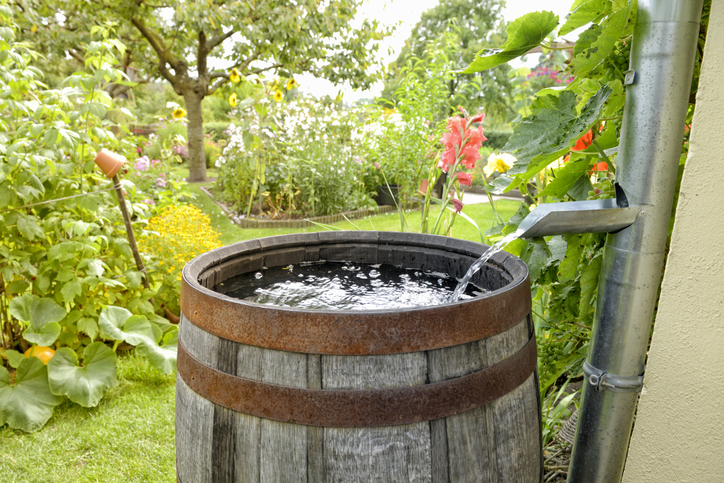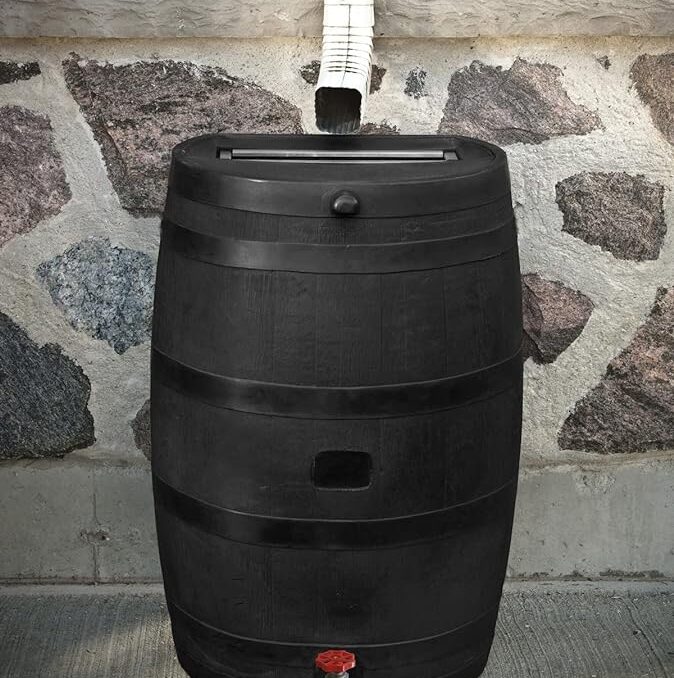Sustainable living is no longer just a trend—it’s the new normal. With water supplies running low in many regions, conserving water is more important than ever. One easy way to save water is through rainwater harvesting.
It doesn’t matter if you live in the dry, arid desert or in the middle of a rain forest; capturing and reusing rainwater can significantly reduce your dependence on municipal water supplies and also cut down your water bill.
Here’s a beginner’s guide to help you get started with rainwater harvesting.

What is rainwater harvesting?
Rainwater harvesting is pretty simple – instead of letting rainwater flow away into storm drains, you catch it, store it, and use it when needed. Most people use the water for gardening, irrigation, or household chores like washing and flushing toilets.
Why harvest rainwater?
Rainwater is free of the chemicals and salts that are often found in our tap water, making it ideal for watering plants – especially those you plan on eating. Your garden will thrive with this natural, chemical free water. Harvesting rainwater can also reduce runoff which leads to flooding, erosion, and the overloading of stormwater systems.
Since more places are putting restrictions on water usage as drought conditions continue across the country, harvesting rainwater can help reduce the strain on municipal systems. It is also a proactive way to do your part with water conservation efforts. Plus, using harvested rainwater can also significantly reduce your monthly water bills. Over time, the savings can offset the initial start-up costs – which are pretty low.
Basic components of a rainwater harvesting system
- Catchment Area: This is typically your roof. The larger and cleaner your roof, the more water you can collect. Metal roofs are especially good for harvesting because they are smooth and non-porous.
- Gutters and Downspouts: These channels guide the rainwater from your roof to your storage system. Ensure they are clean and debris-free to ensure efficient water flow.
- First Flush Diverter: This device is a crucial part of your system. It ensures that the initial flow of water, which might contain debris or contaminants from your roof, is diverted away from your storage tank. After the first flush, the cleaner water flows into your tank, maintaining the quality of the stored rainwater.
- Storage Tank: The star of the show is your the storage tank that holds the collected rainwater. Tanks come in various sizes and materials, from small barrels to large underground cisterns, depending on your needs and budget.
- Distribution System: This is how you get the harvested rainwater to where you need it. It could be as simple as a tap at the bottom of the tank or a more complex pump system that delivers water to your garden or home.

This rain barrel holds 50 gallons of water and is super easy to install.
Let’s collect some rainwater!
If you’re brand new to rainwater harvesting, it’s best to start with a simple setup like a rain barrel collected from your downspout. Once you get comfortable with the process, you can always upgrade to one of the more complex collection methods. Regular maintenance is crucial for the longevity and efficiency of your system, so make sure your gutters are clean and your tank is free of cracks or leaks.
Using your rainwater for everyday tasks like watering the garden is not just practical, it’s also really satisfying! Remember that drinking rainwater is not advised unless you go through proper treatment procedures – which could be something to consider in the future. Whether you want to reduce your water bills or contribute to sustainability efforts, starting with a basic rainwater harvesting system is a step in the right direction. And as you grow more accustomed to it, you can expand your system and increase your water independence.
